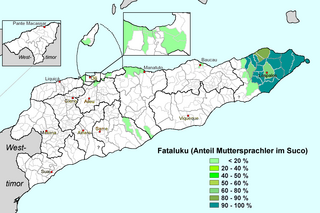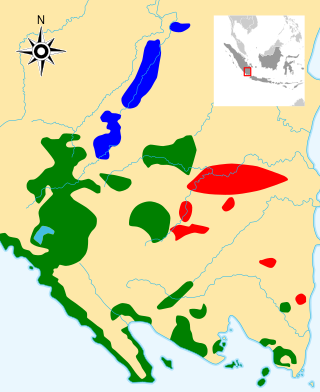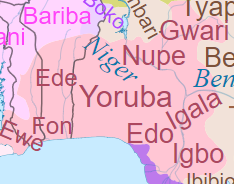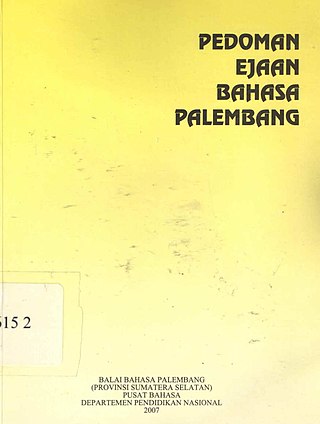
The Austroasiatic languages are a large language family spoken throughout mainland Southeast Asia, South Asia and East Asia. These languages are natively spoken by the majority of the population in Vietnam and Cambodia, and by minority populations scattered throughout parts of Thailand, Laos, India, Myanmar, Malaysia, Bangladesh, Nepal, and southern China. Approximately 117 million people speak an Austroasiatic language, of which more than two-thirds are Vietnamese speakers. Of the Austroasiatic languages, only Vietnamese, Khmer, and Mon have lengthy, established presences in the historical record. Only two are presently considered to be the national languages of sovereign states: Vietnamese in Vietnam, and Khmer in Cambodia. The Mon language is a recognized indigenous language in Myanmar and Thailand, while the Wa language is a "recognized national language" in the de facto autonomous Wa State within Myanmar. Santali is one of the 22 scheduled languages of India. The remainder of the family's languages are spoken by minority groups and have no official status.

Minangkabau is an Austronesian language spoken by the Minangkabau of West Sumatra, the western part of Riau, South Aceh Regency, the northern part of Bengkulu and Jambi, also in several cities throughout Indonesia by migrated Minangkabau. The language is also a lingua franca along the western coastal region of the province of North Sumatra, and is even used in parts of Aceh, where the language is called Aneuk Jamee.

Fataluku is a Papuan language spoken by approximately 37,000 people of Fataluku ethnicity in the eastern areas of East Timor, especially around Lospalos. It is a member of the Timor-Alor-Pantar language family, which includes languages spoken both in East Timor and nearby regions of Indonesia. Fataluku's closest relative is Oirata, spoken on Kisar island, in the Moluccas of Indonesia. Fataluku is given the status of a national language under the constitution. Speakers of Fataluku normally have a command of Tetum and/or Indonesian, those speakers who are educated under Portuguese rule or from younger generation educated under Portuguese-language educational system during independence speak Portuguese.

Valley Yokuts is a dialect cluster of the Yokutsan language family of California.
Jambi Malay is a Malayic language spoken in Jambi province, Indonesia. It is closely related to Palembang Malay in neighbouring South Sumatra, Riau Malay in Riau Province and the surrounding islands, and Bengkulu Malay in Bengkulu Province.

The Malayic languages are a branch of the Malayo-Polynesian subgroup of the Austronesian language family. The most prominent member is Malay, a pluricentric language given national status in Brunei and Singapore while also the basis for national standards Malaysian in Malaysia and Indonesian in Indonesia. The Malayic branch also includes local languages spoken by ethnic Malays, further several languages spoken by various other ethnic groups of Sumatra, Indonesia and Borneo even as far as Urak Lawoi in the southwestern coast of Thailand.

Toba Batak is an Austronesian language spoken in North Sumatra province in Indonesia. It is part of a group of languages called Batak. There are approximately 1,610,000 Toba Batak speakers, living to the east, west and south of Lake Toba. Historically it was written using the Batak script, but the Latin script is now used for most writing.

Lampung or Lampungic is an Austronesian language or dialect cluster with around 1.5 million native speakers, who primarily belong to the Lampung ethnic group of southern Sumatra, Indonesia. It is divided into two or three varieties: Lampung Api, Lampung Nyo, and Komering. The latter is sometimes included in Lampung Api, sometimes treated as an entirely separate language. Komering people see themselves as ethnically separate from, but related to, Lampung people.

Malay Indonesians are ethnic Malays living throughout Indonesia. They are one of the indigenous peoples of the country. Indonesian, the national language of Indonesia, is a standardized form of Riau Malay. There were numerous kingdoms associated with the Indonesian Malays along with other ethnicities in what is now Indonesia, mainly on the islands of Borneo and Sumatra. These included Srivijaya, the Melayu Kingdom, Dharmasraya, the Sultanate of Deli, the Sultanate of Siak Sri Indrapura, the Riau-Lingga Sultanate, the Sultanate of Bulungan, Pontianak Sultanate, and the Sultanate of Sambas. The 2010 census states that there are 8 million Malays in Indonesia; this number comes from the classification of Malays in East Sumatra and the coast of Kalimantan which is recognized by the Indonesian government. This classification is different from the Malaysia and Singapore census which includes all ethnic Muslims from the Indonesian archipelago as Malays.

The Volta–Niger family of languages, also known as West Benue–Congo or East Kwa, is one of the branches of the Niger–Congo language family, with perhaps 70 million speakers. Among these are the most important languages of southern Nigeria, Benin, Togo, and southeast Ghana: Yoruba, Igbo, Bini, and Gbe.

Palembang, also known as Palembang Malay, is a Malayic variety of the Musi dialect group primarily spoken in the city of Palembang and nearby lowlands, and also as a lingua franca throughout South Sumatra. Since parts of the region used to be under direct Javanese rule for quite a long time, Palembang is significantly influenced by Javanese, down to its core vocabularies.
Hashimoto Mantarō was a Japanese sinologist and linguist who is best known for advocating research on language geography, linguistic typology, and how different areal features in the varieties of Chinese reflect contact with other language families.
William Hubbard Baxter III is an American linguist specializing in the history of the Chinese language and best known for his work on the reconstruction on Old Chinese.
North Junín Quechua is a language dialect of Quechua spoken throughout the Andean highlands of the Northern Junín and Tarma Provinces of Perú. Dialects under North Junín Quechua include Tarma Quechua spoken in Tarma Province and the subdialect San Pedros de Cajas Quechua. North Junín Quechua belongs to the Yaru Quechua dialect cluster under the Quechua I dialects. Initially spoken by Huancas and neighboring native people, Quechua's Junín dialect was absorbed by the Inca Empire in 1460 but relatively unaffected by the Southern Cuzco dialect. The Inca Empire had to defeat stiff resistance by the Huanca people.

Helong is a Central Malayo-Polynesian language of West Timor. Speakers are interspersed with those of Amarasi. This language has become endangered as a result of its native speakers marrying those who do not speak Helong, and as a result of coming in contact with the outside community. Helong speakers are found in four villages on the South-Western coast of West Timor, as well as on Semau Island, a small island just off the coast of West Timor. The mostly Christian, slightly patriarchal society of Semau do their best to send their children away to Bali to earn money to send home.

Gabriella Hermon is an American linguist, professor emerita at the University of Delaware.
Wei-Heng Chen is a Chinese linguist who is a professor of English and linguistics at Beijing Language and Culture University. Chen was the education consul of China at the Chinese Consulate-General, Los Angeles.
There are several differences in pronunciation between Standard Arabic and Tunisian Arabic. Nunation does not exist in Tunisian Arabic, and short vowels are frequently omitted, especially if they would occur as the final element of an open syllable, which was probably encouraged by the Berber substratum.
The Moklenic or Moken–Moklen languages consist of a pair of two closely related but distinct languages, namely Moken and Moklen. Larish (1999) establishes the two languages as forming two distinct subgroups of a larger Moken–Moklen branch. Larish (2005) suggests Moklenic as an alternative name for Moken–Moklen, the latter term which was originally used by Larish (1999).
Peter Cole (1941–2023) was an American linguist who made notable contributions to comparative grammar, in particular to the study of Hebrew, Quechua, Chinese and Malay syntax.












